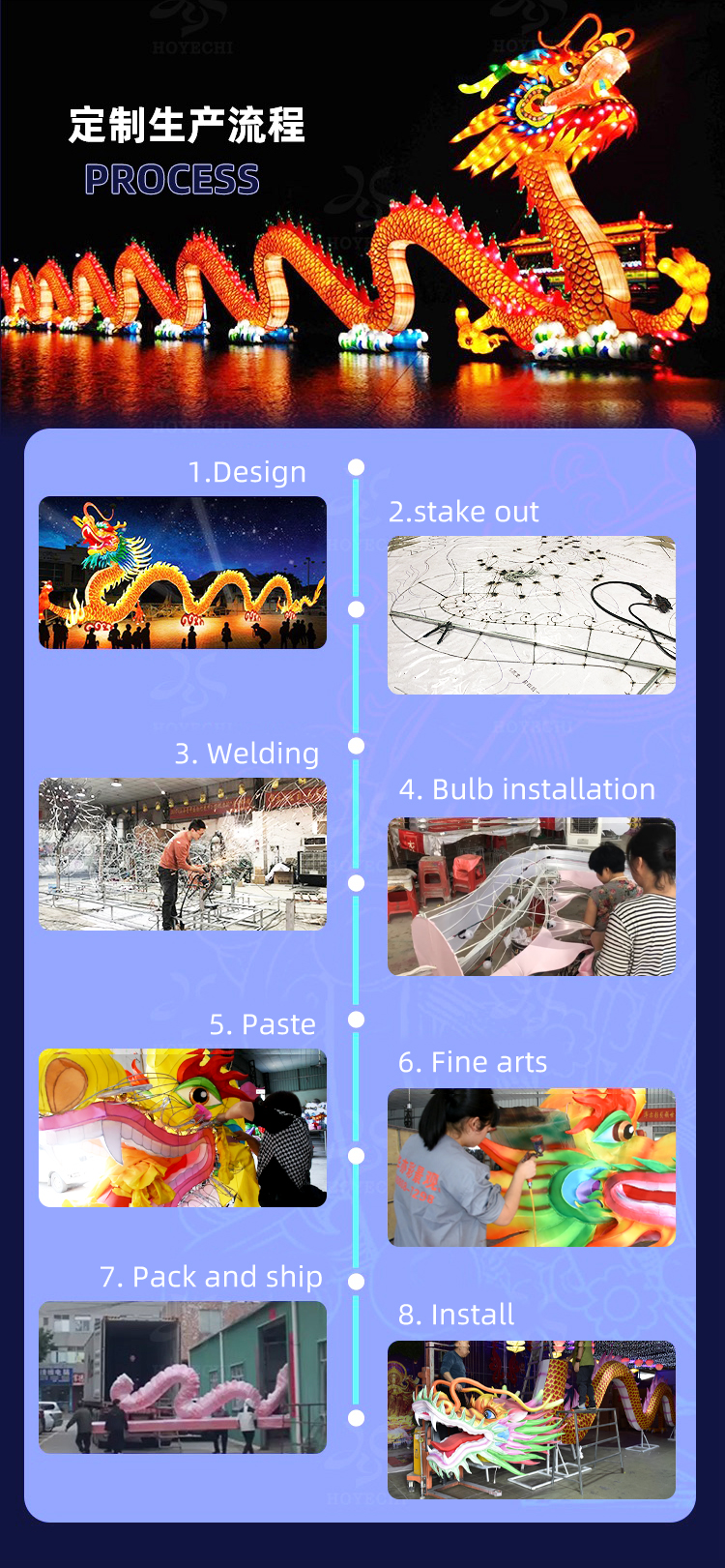Many people are unfamiliar with the novel and unique shapes of Chinese lanterns, not knowing how these lifelike lamps are made. Today, the HOYECHI brand from Huayi Color Company takes you to uncover the mystique behind the production of flower lanterns.
The manufacturing process of HOYECHI’s Chinese flower lanterns involves multiple steps, each requiring meticulous operation from design to final coloration. Here are the specific procedural steps:
1. Design Sketch: This step is fundamental in creating traditional Chinese festival lanterns. It involves drawing a detailed sketch based on the theme and requirements of the light festival. The sketch represents the overall conception and visual effect of the lantern, serving as a guiding document throughout the entire production process.
2. Structural Design: Following the sketch, further design of the lantern’s internal structure and support frame is conducted. Appropriate structural design not only ensures the stability of the lantern but also considers circuit layout and the realization of light and shadow effects, guaranteeing that the lantern exhibits enchanting brilliance at night.
3. Material Selection: Common materials used by Huayi Color Company for Chinese flower lanterns include silk, paper, bamboo strips, metal, etc. Different materials are used for various components; for example, blow-molded paper cutting techniques can be used for feathers and fur to enhance the detail expressiveness of the lantern.
4. Part Manufacturing: Based on the structural diagram and sketch, staff begin handcrafting each component through processes such as carving, cutting, and splicing. Some complex parts may require special skills, like transforming blow-molded paper into tiny feathers, necessitating hundreds of cuts per feather to achieve a realistic effect.
5. Assembly Frame: Once all parts are completed, they are assembled onto the support frame. This process requires precise calculation and meticulous craftsmanship to ensure each part is accurately positioned, maintaining the integrity and aesthetic appeal of the overall shape.
6. Circuit Installation: At the heart of a lantern is its internal lighting; hence, installing circuits and bulbs is an essential step. Technicians need to arrange wires according to design drawings and install energy-efficient LED bulbs or other lighting equipment while ensuring the safety and reliability of the circuit.
7. Light Source Testing: After installing the circuit, conducting a light source test is an indispensable step. Testing ensures all bulbs illuminate properly, the light effect meets expectations, and checks for potential safety hazards in the circuit to guarantee safe viewing for audiences.
8. Surface Treatment: Spraying various colors of gouache paint on the surface of the lantern aims to make its colors more vibrant at night, with natural gradient transitions, enhancing visual beauty. Painting techniques require high skill levels from artisans.
9. Detail Decoration: Besides general coloring, some minor parts of the lantern also need embellishment, such as adding sequins, gold and silver lines, etc. These decorations make the lantern even more dazzling under light illumination.
10. Final Inspection: Upon completion of all manufacturing steps, a final inspection is conducted to ensure the lantern meets expected outcomes in terms of shape, color, and brightness. Considerations must also be given to the stability and safety of the lantern during actual display, ensuring it can withstand different outdoor weather conditions.
In summary, after gaining further insight into the production process of Huayi Color Company’s Chinese flower lanterns, one can see that this traditional craft not only demands exceptional handicraft skills but also the support of modern technology and innovative materials. This combination allows Huayi Color Company’s Chinese flower lanterns to be renowned domestically and globally, showcasing the charm of traditional Chinese culture.
Post time: Aug-21-2024





